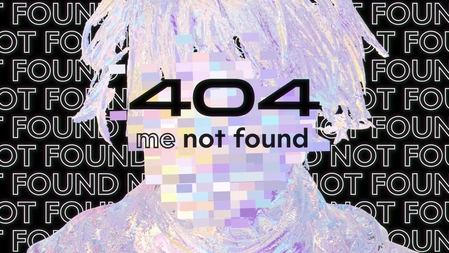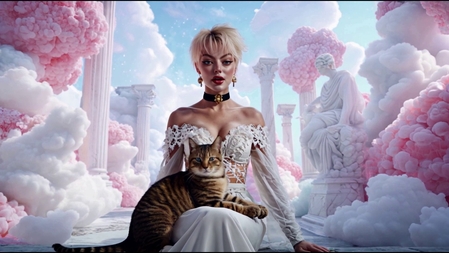Hypergray
How are current developments in the field of artificial intelligence changing music production? Eleonora Dieterichs and Oliver Scharf pose this question with their work Hypergray, which is being presented in the exhibition Fluid in the exhibition hall of the Kunsthochschule Kassel until May 31.
The cross-media project moves between the poles of required authenticity and technical possibility. It examines the field of tension of a globally networked, digitalized and scalable AI-supported production infrastructure - and searches for the essence of current and future pop music.
Through the shameless use of various AI models, an artificial avatar was created and brought onto the virtual stage. Lyxie Gray, as this character is called, not only exists as a social media presence, but has also produced a complete music album. Brainrot.exe comprises eight songs that deal with phenomena and perspectives that arise in the course of artificial intelligence and digital distribution channels. The album has been released on all major music streaming platforms - including Spotify, Apple Music, Tidal and many more - and was also released on vinyl in a limited edition of 100 copies.
Lyxie Gray is possibly the first AI pop star whose music has been pressed onto vinyl as an analog artifact. She embodies a deliberately neutral, female-read digital identity - a projection surface without being obtrusive. As a generalized, synthetic figure, she stands for a revaluation of the everyday.
In the history of pop music, projects such as Boney M or the Gorillaz have already shown that fictional or artificial positions can have great success. Hypergray builds on this, but goes one step further: the avatar is understood here not only as an art figure, but also as the result of algorithmic processes - as a product of the digital present.
Despite its artificiality, human needs and conflicts can be projected onto this avatar: the hunger for attention, self-esteem problems, body dysmorphia, the feeling of loneliness or the pressure of social media. It becomes a mirror of collective feelings - a symbol of a generation addicted to likes.
At the same time, the project poses the question: What is a pop star today? An artistic expression - or merely a façade, a Potemkin village for globalized music marketing? Hypergray is a media-artistic study of how AI-supported algorithms can generate and position content and produce apparent relevance. Hypergray is a critical examination of the generic in pop culture - and an outlook on a possible future in which content becomes increasingly average, smooth, but also meaningless, i.e. hyper-gray.
The project was supervised by Prof. Oliver Vogt and Prof. Joel Baumann and was created as part of the research project "Digital Perspectives in Art and Design", funded by the Hessian Ministry of Science and Research, Art and Culture and the AStA of the University of Kassel.
To the music video:


